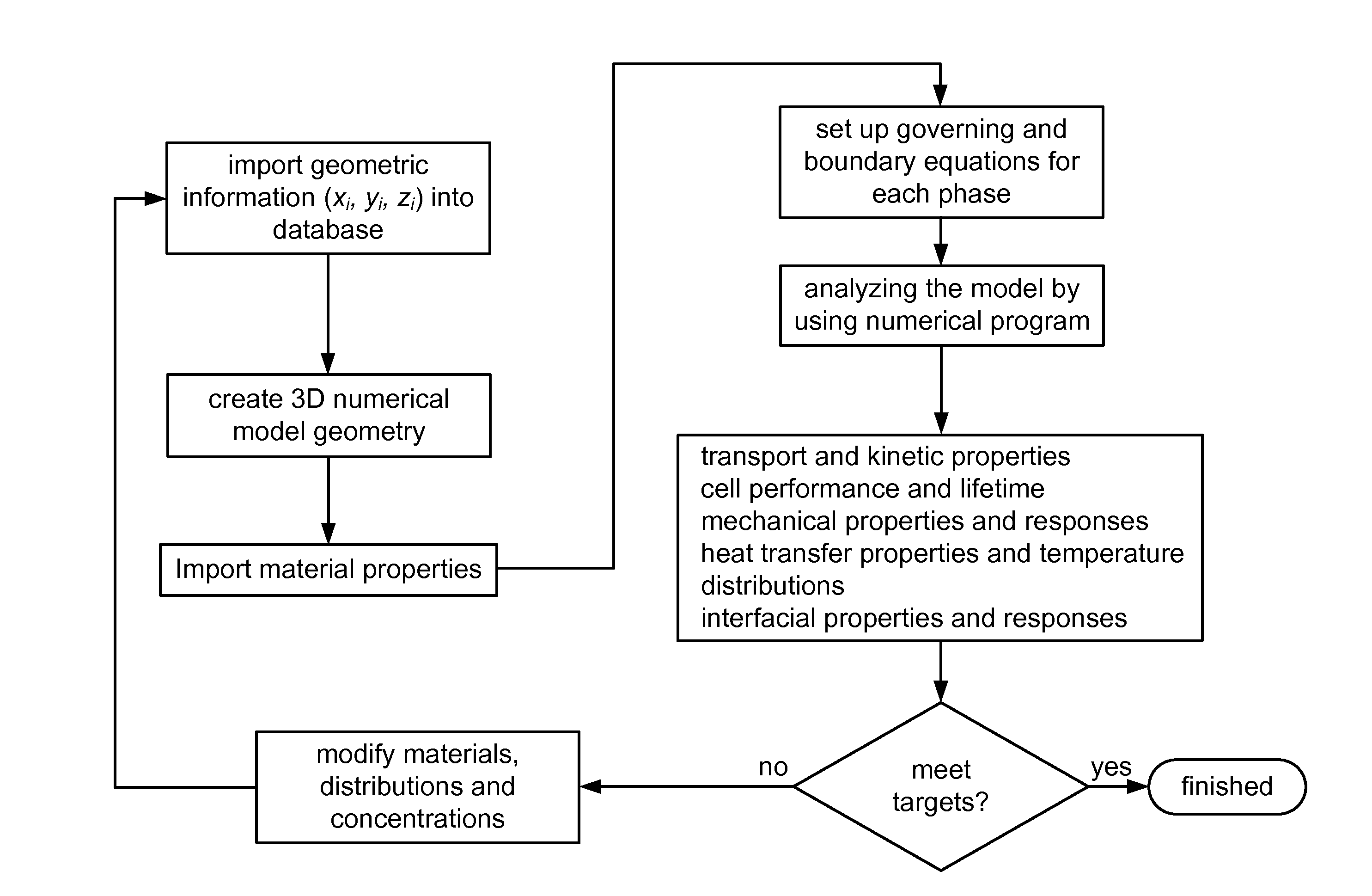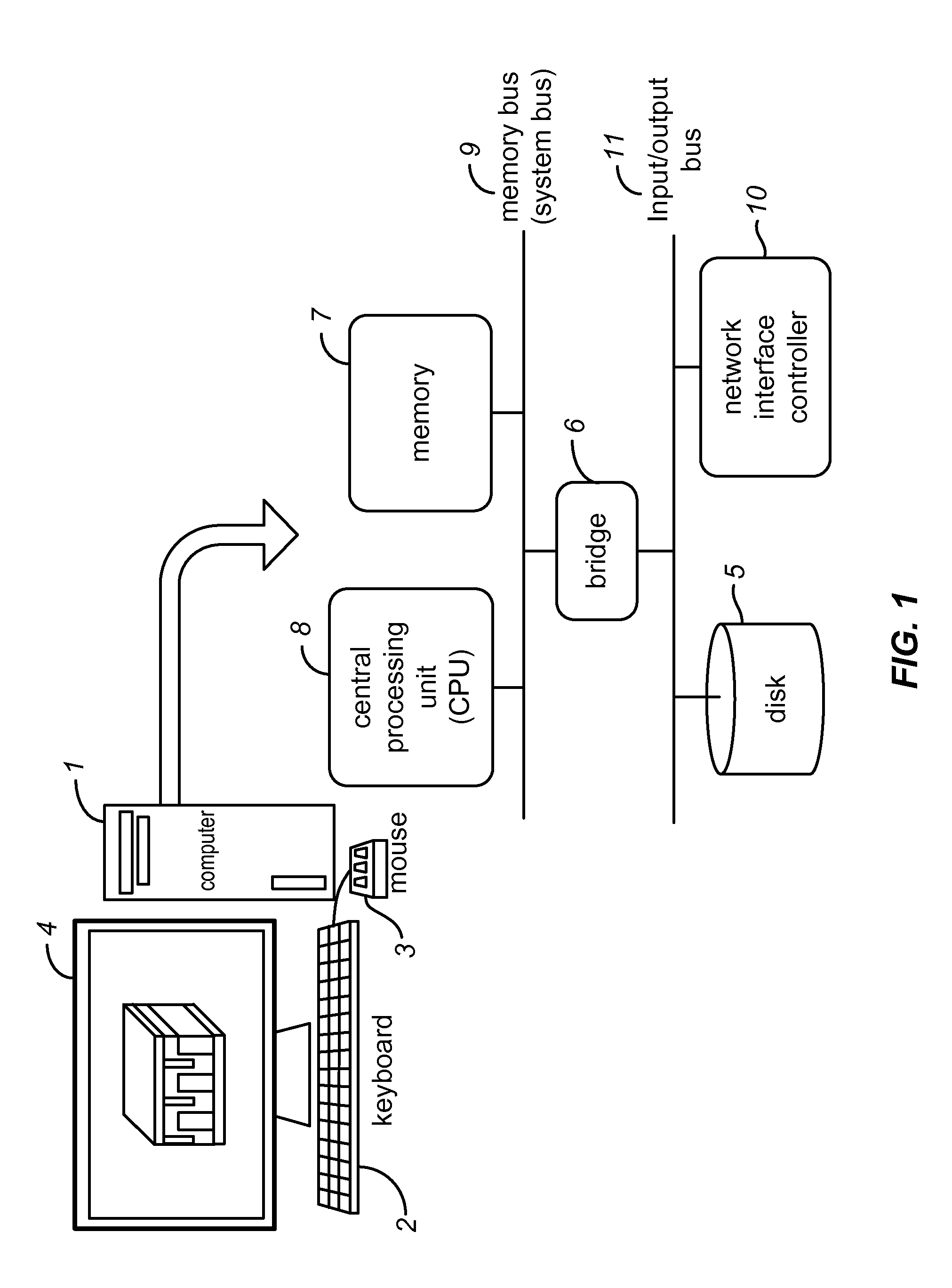Computational method for design and manufacture of electrochemical systems
a technology of electrochemical systems and computation methods, applied in the direction of cell components, sustainable manufacturing/processing, instruments, etc., can solve the problems of time-consuming, inefficient, time-consuming, tedious, etc., and achieve the elimination of costly trial and error in the construction of prototype cells, cost-effective, and superior properties of designed cells
- Summary
- Abstract
- Description
- Claims
- Application Information
AI Technical Summary
Benefits of technology
Problems solved by technology
Method used
Image
Examples
example 1
Design and Method of an Electrochemical Cell
[0041]This example demonstrates the process of manufacturing a new electrochemical cell with the optimal morphological shape of the electrode. As an example of the problems encountered by the designer, three different morphological designs of three-dimensional electrodes are provided: thin-film in FIG. 6A, columnar shape in FIG. 6B, and a sinusoidal shape in FIG. 6C. The materials for the three-dimensional electrochemical cells are copper as anode current collector (33 in FIG. 6A, 38 in FIG. 6B, 43 in FIG. 6C), lithium metal as anode (34 in FIG. 6A, 40 in FIG. 6B, 45 in FIG. 6C), lithium manganese oxide as cathode (36 in FIG. 6A, 41 in FIG. 6B, 46 in FIG. 6C), polymer with lithium salts as the electrolyte (35 in FIG. 6A, 39 in FIG. 6B, 44 in FIG. 6C), and aluminum as cathode current collector (37 in FIG. 6A, 42 in FIG. 6B, 47 in FIG. 6C). Because a polymer electrolyte is used, a separator is unnecessary. These materials used here are for i...
example 2
Modifying an Existing Electrochemical Cell
[0043]This example demonstrates the process of modifying existing electrochemical cell to improve cell performance. As an example encountered by a designer, the rate performance of existing electrochemical cell is not satisfied, and the existing electrochemical cell has the design as shown in FIG. 7A. In this existing electrochemical cell, the anode current collector 48 is copper, the anode 49 is lithium metal, the electrolyte 50 is polymer with lithium salt, the cathode is comprised of mixture of lithium manganese oxide particles 51 served as the active material, carbon black particles 52 served as the conductive additives, and the binder coated around all the particles, and finally the cathode current collector 53 is aluminum. The designer attempts to improve the rate performance by decreasing the size of the particles of cathode 57 and 58 as shown in FIG. 7B. A designer using a conventional design process would have to go into the laborat...
PUM
 Login to View More
Login to View More Abstract
Description
Claims
Application Information
 Login to View More
Login to View More - R&D
- Intellectual Property
- Life Sciences
- Materials
- Tech Scout
- Unparalleled Data Quality
- Higher Quality Content
- 60% Fewer Hallucinations
Browse by: Latest US Patents, China's latest patents, Technical Efficacy Thesaurus, Application Domain, Technology Topic, Popular Technical Reports.
© 2025 PatSnap. All rights reserved.Legal|Privacy policy|Modern Slavery Act Transparency Statement|Sitemap|About US| Contact US: help@patsnap.com



